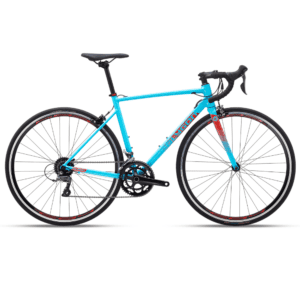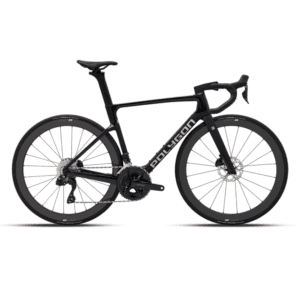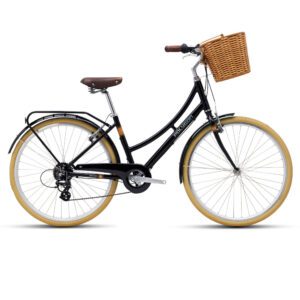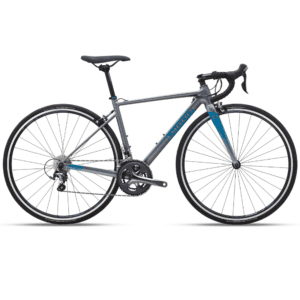Carbon vs. Aluminum Bike Frames: Which Is Right for You?

Are you aiming to beat your best time on the road? Or perhaps you’re out to explore rougher trails? Either way, your bike’s frame will make a big difference in how it performs.
Two materials dominate the scene: carbon and aluminum. Both have strengths. Both come with trade-offs. So, how do you choose?
This guide breaks down what carbon vs. aluminum bike frames offer based on our real-world experience from the bike trading world to help you pick one that fits your goals and riding style.
Bike Frames
The frame is your bike’s foundation. It connects every major part — bike wheels, handlebars, pedals, and seat — and takes most of the load. It also influences how your bike feels: its weight, stiffness, responsiveness, and comfort.
Wondering what the best bike material is for your frame? The answer depends on your specific needs. Some of the common material choices include:
- Aluminum: Lightweight, affordable, and corrosion-resistant, aluminum is popular in entry-level to mid-range bikes.
- Carbon Fiber: Strong, lightweight, and highly responsive, carbon fiber is preferred for high-performance road and mountain bikes.
- Steel: Durable and comfortable, steel offers a smooth ride and is often used in touring and classic bikes for its strength and flexibility.
- Titanium: Lightweight, corrosion-resistant, and durable, titanium frames provide a smooth, comfortable ride and are favored in niche markets.
Most riders go with either aluminum or carbon. Aluminum keeps costs down while still delivering solid performance, while carbon gives you that light and fast feel many racers want.
Bike Frame Types
Beyond material, frame design also affects how the bike handles and determines who it suits best.
Diamond Frame
The diamond frame is the most common design. Its two triangles (one in front, one in back) offer great strength and power transfer. You’ll find this on most mountain, road, and hybrid bikes.
This design offers sturdiness and efficient power transfer, making it ideal for mountain, road, and hybrid bikes.
|
ACX Performance UCI-Approved Carbon Frame |
Step-through or Open Frame
As their name implies, step-through or open frames are designed to make mounting and dismounting easier. This is all thanks to their lack of a top tube.
This bike frame style is common in city bikes and older models and is ideal for riders who are wearing skirts or dresses or have limited mobility. Just note: It may weigh more and feel less stiff.
|
Aluminum Frame City Bike |
How Strong Are These Frames?
When it comes to bike frame strength, aluminum and carbon fiber perform differently.
Aluminum is tough and handles tough rides well. It resists rust and takes a beating. But over time, constant stress can wear it down.
Carbon fiber resists fatigue better and holds up under normal use longer. But if it takes a hard hit (like a crash), it can crack or break more easily than aluminum.
Bike Frame Performance
Does carbon offer better control and precision? It does.
Thanks to its stiffness and responsiveness, carbon fiber frames provide superior handling, especially when cornering or making quick adjustments at high speeds. These bike frames are ideal for competitive road and mountain biking.
While still responsive, aluminum doesn’t offer the same level of precision due to its slightly more flexible nature. Of course, the best choice still depends on your specific requirements.
Carbon fiber is also favored over aluminum in terms of ride feel and comfort due to its ability to reduce vibrations, especially on rough terrain or over long distances. Its “damping” effect allows the frame to absorb road buzz for a more enjoyable experience.
On the other hand, aluminum tends to be stiffer overall, making the ride feel harsher, especially on bumpy roads. While it doesn’t absorb vibrations as well as carbon, it does provide excellent power transfer.
Carbon vs. Aluminum Bikes: A Side-by-Side Look
Your best pick depends on how you ride, what terrain you tackle, and how much you’re willing to spend. Here’s how they compare in different categories.
Carbon vs. Aluminum Road Bikes
If you’re all about speed, distance, or both, a carbon road bike gives you an edge. It’s lighter, which means you can climb hills and pick up speed much more easily.
Carbon’s stiffness also translates to enhanced power transfer. This means more of your pedaling effort turns into forward motion. That and their ability to absorb road buzz can make long-distance rides smoother and far less fatiguing.
Into competitive cycling? Check out one of our Union Cycliste Internationale (UCI)-approved road bikes below:
|
ACX Performance UCI-Approved Carbon Frame |
Looking for a more affordable alternative? Aluminum frames can give you solid performance at a lower price. While they don’t absorb vibrations as well as carbon, some modern designs have improved comfort considerably, making them a great choice for recreational rides, commuting, or getting started in cycling. Here’s an example:
|
ALX All-Round, Hub Spacing Aluminum Frame |
Carbon vs. Aluminum Mountain Bikes
Aluminum frames are often preferred for mountain biking because of their durability and resistance to impact, which is crucial on rough terrains. They are generally more affordable and easier to repair.
However, carbon frames are lighter, stiffer and offer improved performance in terms of responsiveness and weight.
Beginner/Entry-Level Bikes
Are aluminum frames the best option for entry-level cyclists?
Aluminum frames offer a good balance between affordability, durability, and weight. They are also easier to maintain and repair, which is beneficial for new riders. This Polygon road bike is a good example:

Polygon Strattos S2 Aluminum Frame City Bike |
Which Bike Frame Material Is the Best for You?
To help you decide, here’s a comparison table highlighting key differences between carbon and aluminum bike frames:
| Feature | Carbon Bike Frame | Aluminum Bike Frame |
| Vibration Damping | Excellent, provides a smoother ride | Good, but less effective |
| Frame Weight | Lighter, enhances speed and agility | Heavier, may affect climbing |
| Riding Performance | Stiff, responsive, ideal for racing | Stiff, but offers more feedback |
| Impact Resistance | Okay for road or city rides | More durable, easier to repair |
| Bike Frame Repairs | Expensive, complex repairs | Generally more affordable repairs |
While exceptions exist, this broadly reflects how different bike frame materials are viewed.
Make an Informed Decision
Deciding which bike frame is best between carbon and aluminum depends on your unique needs. Choose carbon fiber if you want a lightweight, high-performance bike with better vibration damping. Aluminum frames are ideal for a durable, cost-effective, and easy-to-maintain option.
Still unsure? Take advantage of Bikeera’s test ride and bike fitting service to find the perfect match.



